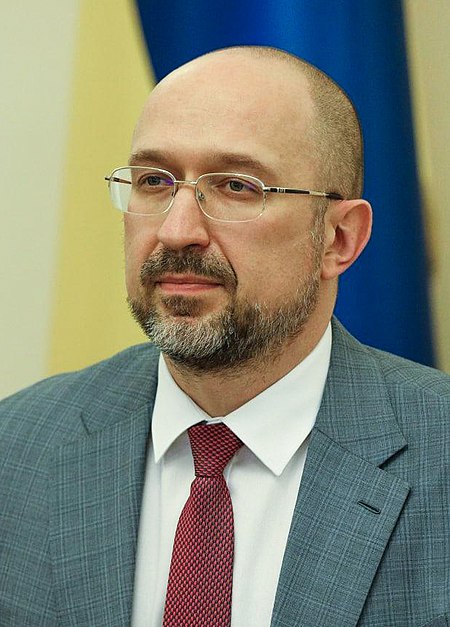Nonsense
|
Read other articles:

Pour les articles homonymes, voir Tue (homonymie) et Traité de Maastricht (homonymie). Cet article parle du traité sur l'Union européenne dans sa version en vigueur actuellement. Pour le traité de Maastricht comme traité modificatif, voir traité de Maastricht ; pour la version du traité en vigueur entre 1993 et 2009, voir traité sur l'Union européenne (1993-2009). Traité sur l'Union européenne Traité de Maastricht Signature 7 février 1992 Lieu de signature Maastricht (Pays-Bas)…

Численность населения республики по данным Росстата составляет 4 003 016[1] чел. (2024). Татарстан занимает 8-е место по численности населения среди субъектов Российской Федерации[2]. Плотность населения — 59,00 чел./км² (2024). Городское население — 76,72[3] % (2022)…

Observatoire de Paris - PSLHistoireFondation 1667CadreCode UMS2201Type Grand établissementForme juridique Établissement public national à caractère scientifique culturel et professionnelDomaine d'activité Géodésie, astronomieSiège Paris (61, avenue de l'Observatoire)Pays FranceCoordonnées 48° 48′ 18″ N, 2° 14′ 00″ EOrganisationEffectif 600Chercheurs 333Chercheurs associés 248Doctorants 245Président Fabienne Casoli (Depuis 2020)Organisation…

Pour les articles homonymes, voir Rémy Martin. E. Rémy Martin & Co Création 1724 Dates clés 26 janvier 1955 : immatriculation Forme juridique Société par actions simplifiée à associé unique Slogan Enracinés dans l'exception Siège social Cognac, Charente Direction François Hériard Dubreuil, président (depuis 2013) Activité Production de boissons alcooliques distillées (APE 1101Z) Produits Cognac Société mère Rémy Cointreau Effectif 379 à fin mars 2019 SIREN 775563323…

Building in Tirana, AlbaniaTirana International HotelTirana International HotelLocation in AlbaniaGeneral informationLocationTirana, AlbaniaAddressSkanderbeg Square 8, 1001 Tirana, AlbaniaCoordinates41°19′47″N 19°49′7″E / 41.32972°N 19.81861°E / 41.32972; 19.81861Opening1979Technical detailsFloor count15Design and constructionArchitect(s)Valentina PistoliOther informationNumber of rooms168Websitewww.tiranainternational.com Tirana International Hotel (also call…

烏克蘭總理Прем'єр-міністр України烏克蘭國徽現任杰尼斯·什米加尔自2020年3月4日任命者烏克蘭總統任期總統任命首任維托爾德·福金设立1991年11月后继职位無网站www.kmu.gov.ua/control/en/(英文) 乌克兰 乌克兰政府与政治系列条目 宪法 政府 总统 弗拉基米尔·泽连斯基 總統辦公室 国家安全与国防事务委员会 总统代表(英语:Representatives of the President of Ukraine) 总理…

American reality television series Chrissy & Mr. JonesGenreRealityStarring Jim Jones Chrissy Lampkin Opening themeBetter Me (feat. Robbie Nova)ComposerJim JonesCountry of originUnited StatesOriginal languageEnglishNo. of seasons2No. of episodes16ProductionExecutive producers Brad Abramson Mona Scott-Young Chrissy Lampkin Jim Jones Danielle Gelfand David DiGangi Josh Richards Shelly Tatro Stefan Springman Toby Barraud Running time20-23 minutesProduction companiesEastern TVMonami Entertainment…

Pour les articles homonymes, voir Géant de glace. Ne doit pas être confondu avec planète glacée. Uranus et Neptune, les géantes de glaces du système solaire. Les géantes de glaces[note 1], parfois appelée planète géante glacée ou planète sous-géante, ou encore, d'après le nom des deux exemples présents dans notre système solaire, un(e) Uranus ou un(e) Neptune (le second étant plus couramment utilisé), sont une sous-classe de planètes géantes qui ne sont pas principalement com…

هذه المقالة يتيمة إذ تصل إليها مقالات أخرى قليلة جدًا. فضلًا، ساعد بإضافة وصلة إليها في مقالات متعلقة بها. (يناير 2020)Learn how and when to remove this message Legal Services Corporation شركة الخدمات القانونية البلد الولايات المتحدة المقر الرئيسي واشنطن العاصمة تاريخ التأسيس 1974 المؤسس الكو�…

List of events ← 1594 1593 1592 1591 1590 1595 in Scotland → 1596 1597 1598 1599 1600 Centuries: 14th 15th 16th 17th 18th Decades: 1570s 1580s 1590s 1600s 1610s See also:List of years in ScotlandTimeline of Scottish history1595 in: England • Elsewhere Events from the year 1595 in the Kingdom of Scotland. Incumbents Monarch – James VI Births Sir Alexander Falconer, 1st Lord Falconer of Halkerton Deaths 15 September – John MacMorran, Baillie of Edinburgh, killed by rioting sc…

American stock market index This article needs to be updated. Please help update this article to reflect recent events or newly available information. (November 2023) For a list of S&P 500 companies, see List of S&P 500 companies. S&P 500S&P 500 Index from 1970 to 2023FoundationMarch 4, 1957; 67 years ago (1957-03-04)[1]OperatorS&P Dow Jones Indices[2]ExchangesNYSENasdaqCboe BZX ExchangeTrading symbol^GSPC$SPXSPX.SPX.INXConstituents503[2&…

ScheemdaBekas munisipalitas / kota BenderaLambang kebesaranNegaraBelandaProvinsiGroningenMunisipalitasOldambtLuas(2006) • Total117,46 km2 (4,535 sq mi) • Luas daratan114,44 km2 (4,419 sq mi) • Luas perairan3,02 km2 (117 sq mi)Populasi (1 January, 2007) • Total14.107 • Kepadatan123/km2 (320/sq mi) Source: CBS, Statline.Zona waktuUTC+1 (CET) • Musim panas (DST)UTC+2 (…

Not to be confused with Klang or Keluang in Indonesia. Town and district capital in Johor, MalaysiaKluang كلواڠTown and district capital SealMotto(s): Kluang Maju Sejahtera, Bandar Berdaya Huni (Prosperous Kluang, A Livable City)KluangCoordinates: 2°2′1″N 103°19′10″E / 2.03361°N 103.31944°E / 2.03361; 103.31944Country MalaysiaState JohorDistrict KluangEstablishment1915Granted municipal status8 May 2001Government • TypeLocal governmen…

British politician (1709-85) Sir Charles Frederick KB FRS (21 December 1709 – 18 December 1785) was a British politician who sat in the House of Commons from 1741 to 1784. Sir Charles Frederick Early life Frederick was the third son of Sir Thomas Frederick, sometime Governor of Fort St David, and his wife Mary Moncrieff, daughter of William Moncrieff and was born on 21 December 1709. He was a younger brother of Sir John Frederick, 4th Baronet.[1] He was educated at Westminster School f…

Organization This article relies excessively on references to primary sources. Please improve this article by adding secondary or tertiary sources. Find sources: International Society for Ecological Economics – news · newspapers · books · scholar · JSTOR (October 2010) (Learn how and when to remove this message) International Society for Ecological EconomicsClypeaster or sand dollar,the symbol of the ISEEAbbreviationISEEFormation1989TypeINGORegion served …

Central Bank of Italy For other uses, see Bank of Italy (disambiguation). Bank of ItalyBanca d'ItaliaPalazzo Koch in Rome, headquarters of the Bank of ItalyHeadquartersPalazzo Koch, Rome, ItalyEstablished10 August 1893; 130 years ago (1893-08-10)GovernorFabio PanettaCentral bank ofItalyReserves€225 billion (2023)[1]Succeeded byEuropean Central Bank (1999, 2014)1WebsiteOfficial website1 The Bank of Italy still exists but the ECB took over monetary policy in 1…

2008 film directed by Dennis Dugan You Don't Mess with the ZohanTheatrical release posterDirected byDennis DuganWritten by Adam Sandler Robert Smigel Judd Apatow Produced by Adam Sandler Jack Giarraputo Starring Adam Sandler John Turturro Emmanuelle Chriqui Nick Swardson Lainie Kazan Rob Schneider CinematographyMichael BarrettEdited byTom CostainMusic byRupert Gregson-WilliamsProductioncompaniesColumbia Pictures Relativity Media Happy Madison ProductionsDistributed bySony Pictures ReleasingRelea…

موسى كوناتي معلومات شخصية الميلاد 3 أبريل 1993 (العمر 31 سنة)امبور [لغات أخرى] الطول 1.80 م (5 قدم 11 بوصة)[1][1] مركز اللعب مهاجم الجنسية السنغال معلومات النادي النادي الحالي ديجون مسيرة الشباب سنوات فريق 2005–2010 ASC Toure Kunda de Mbour المسيرة الاحترافية1 سنو�…

العلاقات التونسية الفيجية تونس فيجي تونس فيجي تعديل مصدري - تعديل العلاقات التونسية الفيجية هي العلاقات الثنائية التي تجمع بين تونس وفيجي.[1][2][3][4][5] مقارنة بين البلدين هذه مقارنة عامة ومرجعية للدولتين: وجه المقارنة تونس فيجي المساحة (كم2…

Artikel ini sebatang kara, artinya tidak ada artikel lain yang memiliki pranala balik ke halaman ini.Bantulah menambah pranala ke artikel ini dari artikel yang berhubungan atau coba peralatan pencari pranala.Tag ini diberikan pada Februari 2023. Banjir India 2009 menimpa beberapa negara bagian di India pada Juli 2009, menewaskan sekitar 36 orang di Orissa dan 13 di Kerala. Negara bagian yang paling terpengaruh oleh banjir ini meliputi Orissa,[1][2][3][4] Kerala,&#…
